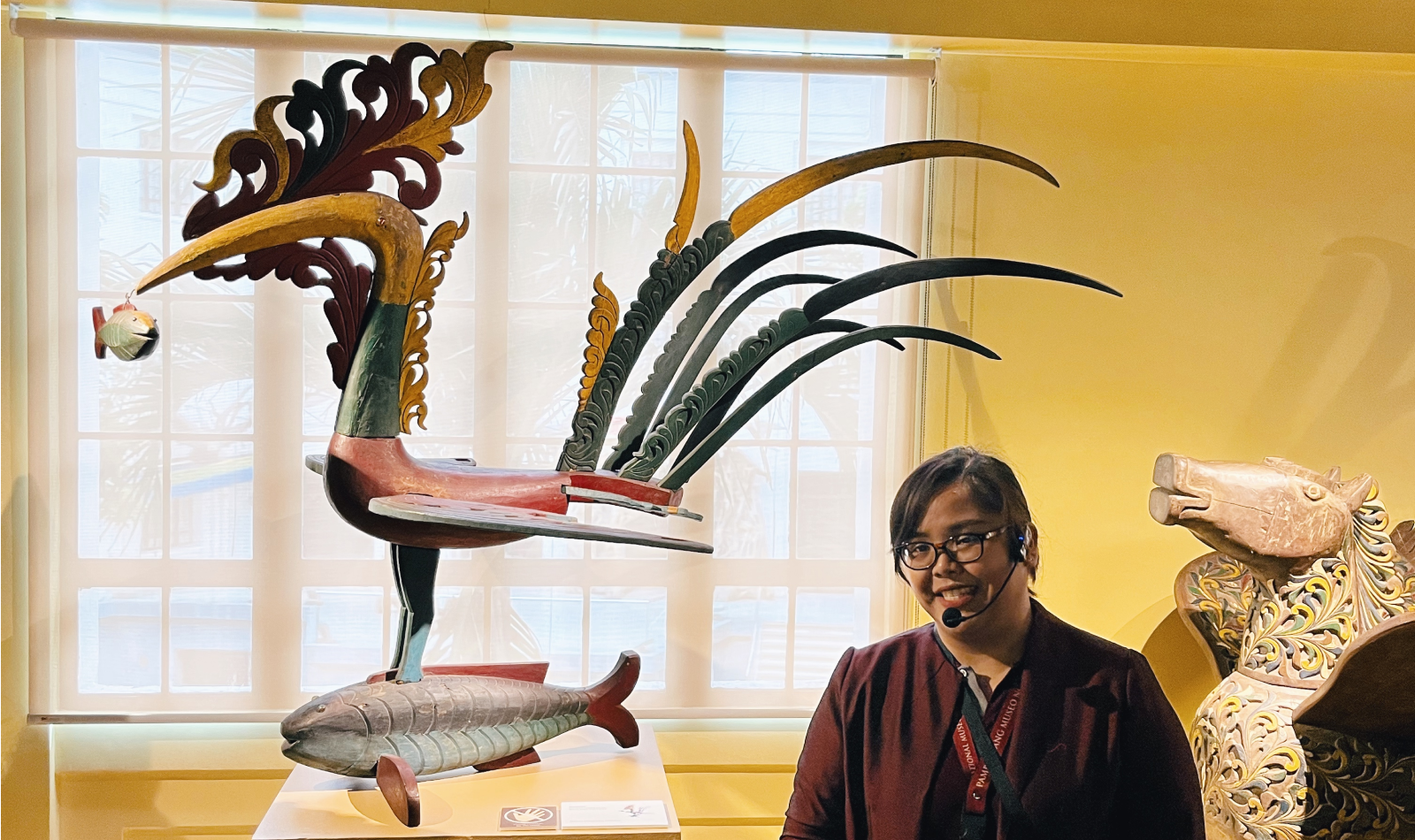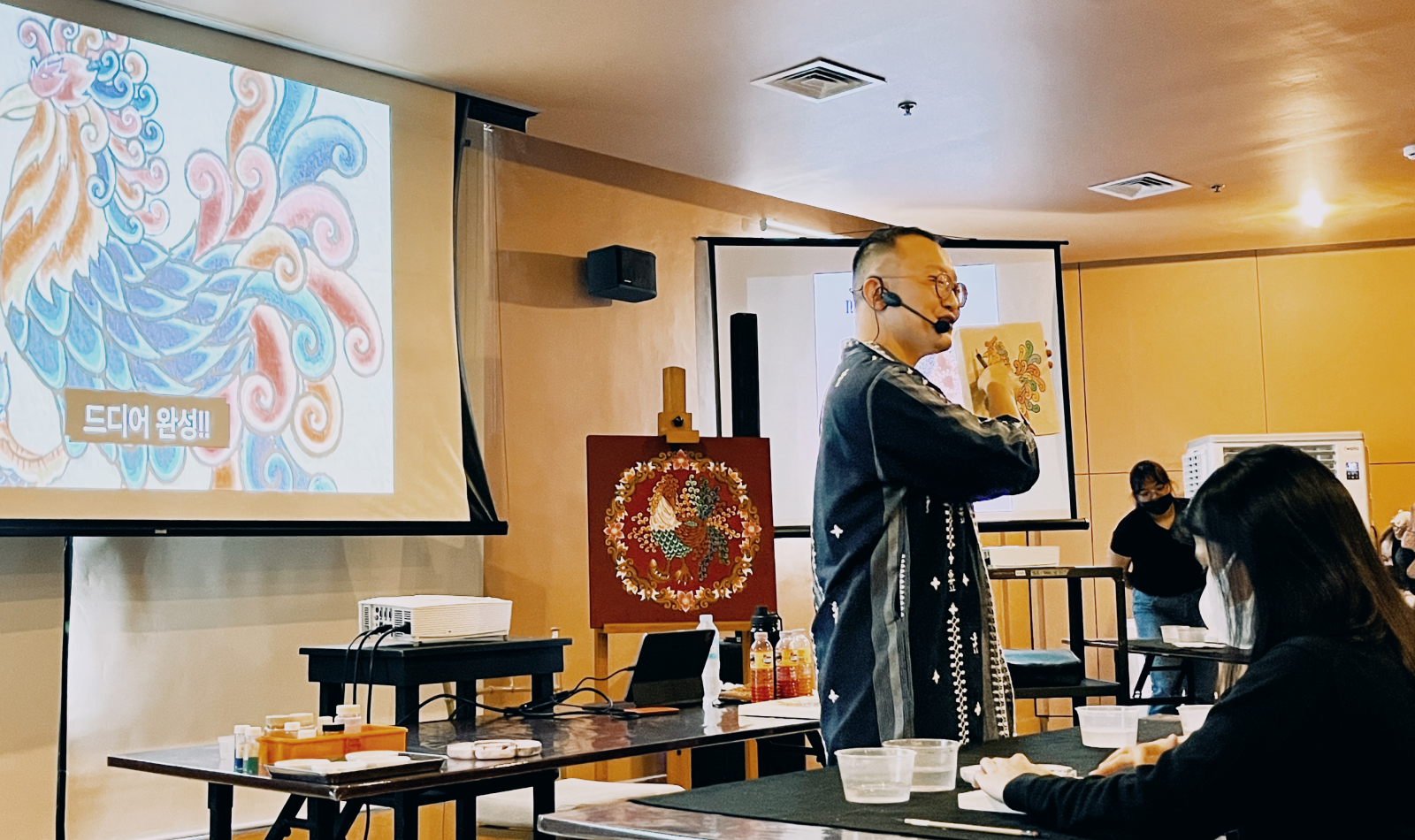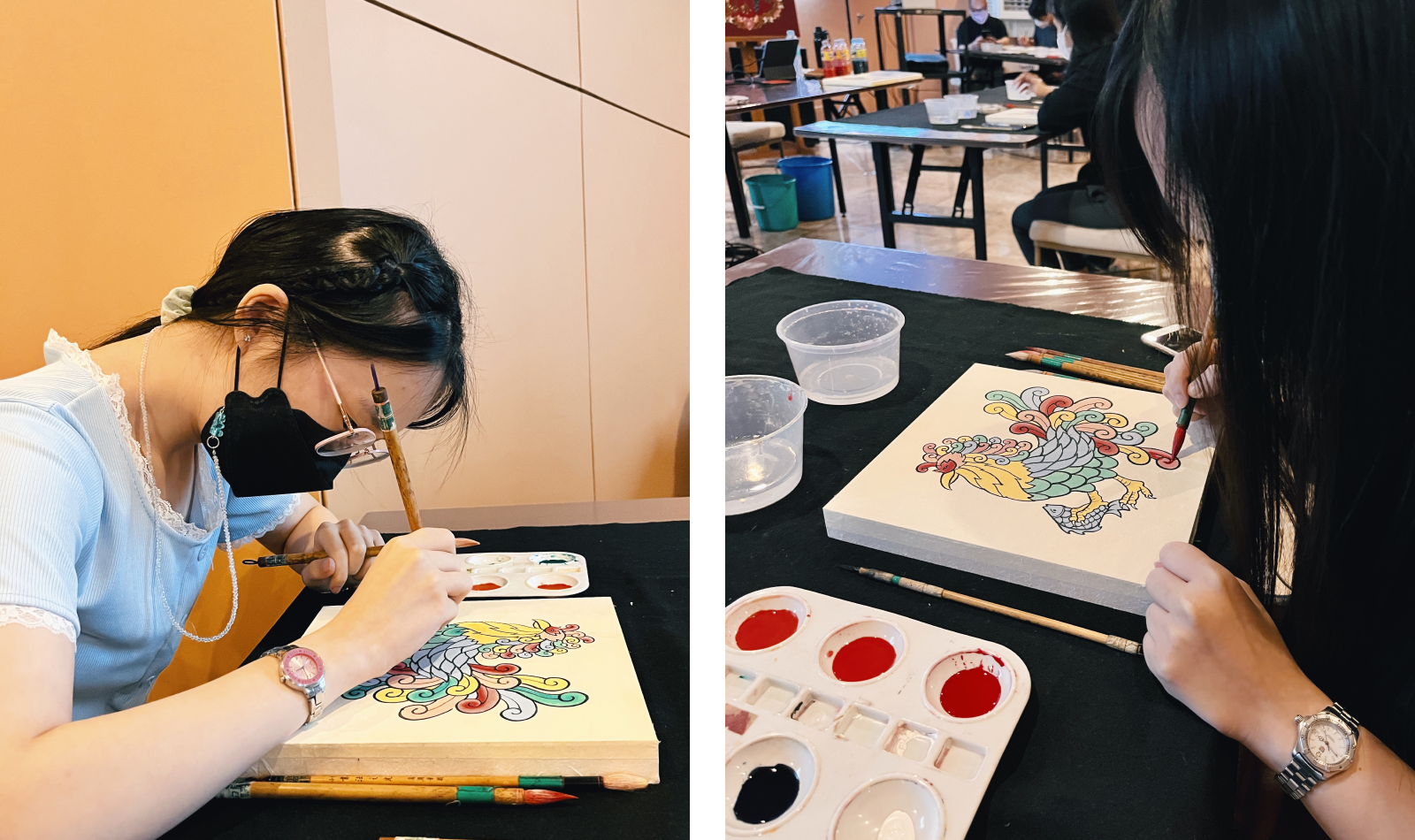- 한국어
- English
- 日本語
- 中文
- العربية
- Español
- Français
- Deutsch
- Pусский
- Tiếng Việt
- Indonesian
By Honorary Reporter Jadiene Shani Teng from the Philippines
Photos by Jadiene Shani Teng
February is National Arts Month in the Philippines. And so on February 18, I attended a Minhwa (Korean folk art) Workshop hosted by the Korean Cultural Center in the Philippines and the National Museum of the Philippines. Art and international cultures are two things I’m deeply interested in, and I was ecstatic to be able to combine these by learning how to paint a sarimanok using the minhwa style.

Our museum guide explains the origins of sarimanok.
At the start of the event, a museum guide showed us around one of the galleries so we could get more inspiration for our painting. She explained more about sarimanok, a portmanteau of the words "sari" (colorful clothing) and "manok" (chicken), which is a chicken-deity based on Philippine folklore. A sarimanok is a symbol of wealth, power and prosperity, and its okir design (swirls and circles) showcases the intricacy and elaborateness of Muslim culture.

Our teacher, Yoon Donghyun, introduces minhwa to the workshop participants.
After the tour, our teacher, Korean artist Yoon Donghyun, gave a lecture introducing minhwa. He explained that minhwa, also known as "people's art," were folk paintings by commoners that emerged during the latter part of the Joseon Dynasty. One of the things that struck me during his lecture was how minhwa goes beyond aesthetics and has its own symbolism and representative forms. For instance, paintings of peonies symbolize wealth, while those of tigers symbolize protection from harm.

The writer and her sister painting minhwa sarimanok.
We then worked on our sarimanok paintings. There are a lot of steps involved in minhwa painting, from drawing the foundation lines to combining this with a layer of hanji, or traditional Korean paper, and then adding numerous layers of paint. In this workshop, we only focused on painting the final layers and blending them. Each of us was provided with paints and a canvas made from hanji printed with a sarimanok drawing and a first coat of paint as a color guide. A unique thing about minhwa is the use of nature-based items for its paints. It's not your regular watercolor or acrylic - the paints are made from natural elements, such as stone pigments and powdered seashells among others, which make minhwa even more special. The colored paints we used were watery yet pigmented, and it was a challenge to work with a type of medium I had never tried before, in a style that was also new to me. It was a struggle to control how the paint spread on the hanji, but in the end, I felt satisfied with how my painting turned out.
kalhong617@korea.kr
*This article is written by a Korea.net Honorary Reporter. Our group of Honorary Reporters are from all around the world, and they share with Korea.net their love and passion for all things Korean.